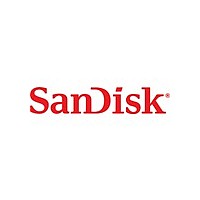SDMJ-32 SanDisk, SDMJ-32 Datasheet - Page 44

SDMJ-32
Manufacturer Part Number
SDMJ-32
Description
Manufacturer
SanDisk
Type
MultiMedia Cardr
Datasheet
1.SDMJ-32.pdf
(91 pages)
Specifications of SDMJ-32
Density
32MByte
Operating Supply Voltage (typ)
3.3V
Operating Temperature (min)
-25C
Operating Temperature (max)
85C
Package Type
MMC
Mounting
Socket
Pin Count
7
Operating Temperature Classification
Commercial
Operating Supply Voltage (min)
2.7V
Operating Supply Voltage (max)
3.6V
Programmable
Yes
Lead Free Status / RoHS Status
Compliant
Revision 1.3
© 2005 SanDisk Corporation
4.2.2
4.2.1
Data Read Format
Data Write Format
When data is not being transmitted, the DAT bus line is high. A transmitted data block
consists of a start bit (low), followed by a continuous data stream. The data stream contains
the net payload data, and error correction bits if an off-card ECC is used. The data stream
ends with an end bit (high). The data transmission is synchronous to the clock signal
The payload for a block-oriented data transfer is preserved by a CRC checksum. The
generator polynomial is standard CCITT format: x
Block Read
The basic unit of data transfer is a block whose maximum size is defined by
READ_BL_LEN in the CSD. Smaller blocks with a starting and ending address contained
entirely within one physical block, as defined by READ_BL_LEN, may also be
transmitted. A CRC appended to the end of each block ensures data transfer integrity.
CMD17 or READ_SINGLE_BLOCK starts a block read and returns the card to the Transfer
State after a complete transfer. CMD18 or READ_MULTIPLE_BLOCK starts a transfer of
several consecutive blocks. Blocks will be continuously transferred until a stop command
is issued.
If the host uses partial blocks with an accumulated length that is not block aligned, the
card, at the beginning of the first misaligned block, will detect a block misalignment error,
set the ADDRESS_ERROR bit in the Status Register, abort transmission, and wait in the
Data State for a stop command.
The data transfer format is similar to the data read format. For block-oriented write data
transfer, the CRC check bits are added to each data block. Prior to an operation, the
MultiMediaCard/RS-MultiMediaCard performs a CRC check for each such received data
block.
Block Write
Block write or CMD24-27 means that one or more blocks of data are transferred from the
host to the card with a CRC appended to the end of each block by the host. If the CRC
fails, the card will indicate the failure on the DAT line; the transferred data will be
discarded and not written and all further transmitted blocks (in multiple block write mode)
will be ignored.
If the host uses partial blocks with an accumulated length that is not block aligned, the
card, at the beginning of the first misaligned block, will detect a block misalignment error,
set the ADDRESS_ERROR bit in the Status Register, abort programming, and wait in the
Data State for a stop command.
The write operation will also be aborted if the host tries to write over a write-protected
area. In this case, however, the card will set the WP_VIOLATION bit.
After receiving a block of data and completing the CRC check, the card will begin
programming and hold the DAT line low if its write buffer is full and unable to accept new
data from a new WRITE_BLOCK command. The host may poll the status of the card with
a SEND_STATUS command at any time, and the card will respond with its status. The
status bit READY_FOR_DATA indicates whether the card can accept new data or whether
the write process is still in progress. The host may deselect the card by issuing CMD7 (to
2
The polynomial is the same one used for a read operation.
2
This mechanism prevents the erroneous writing of transferred data.
4-6
MultiMediaCard/RS-MultiMediaCard Product Manual
Chapter 4 – MultiMediaCard Protocol Description
16
+ x
12
+ x
5
+ 1.
04/22/05












